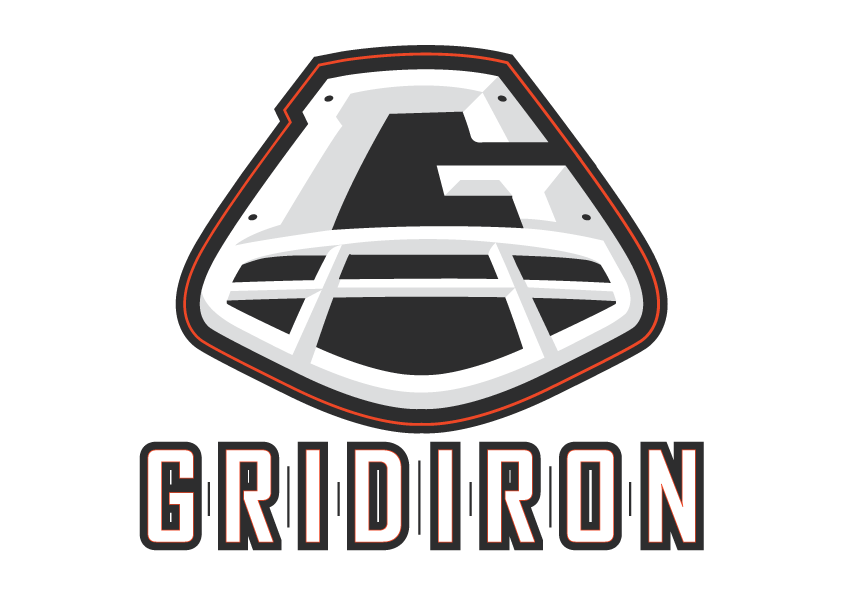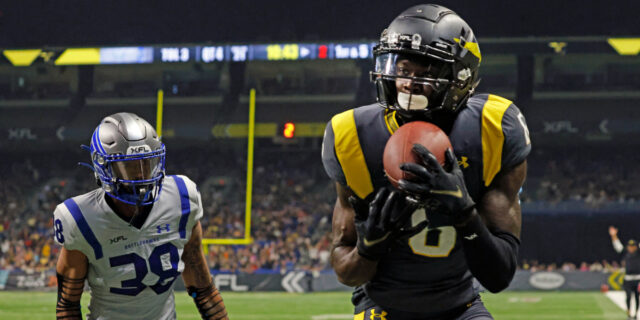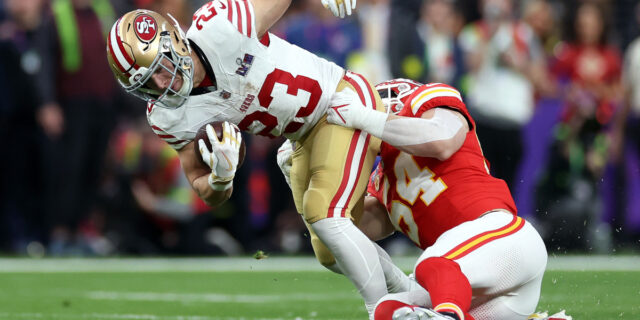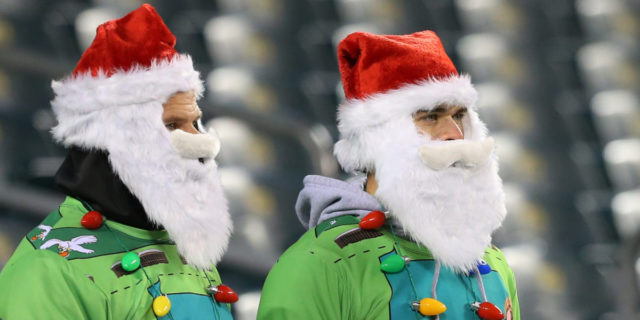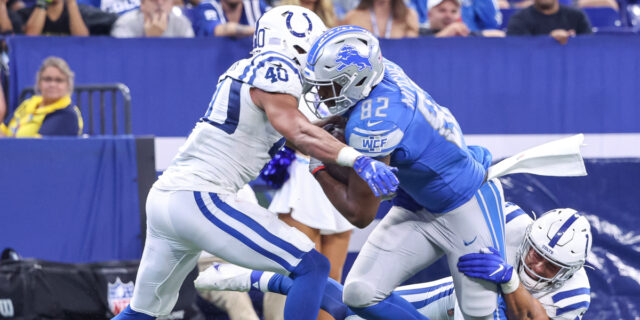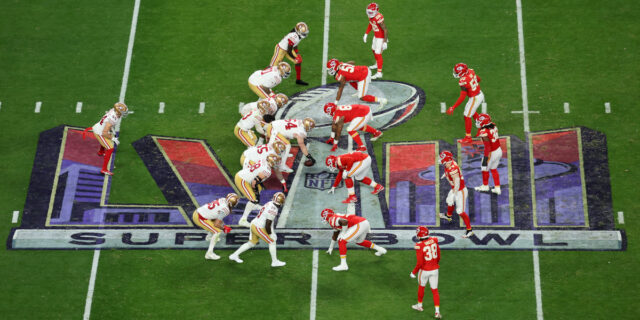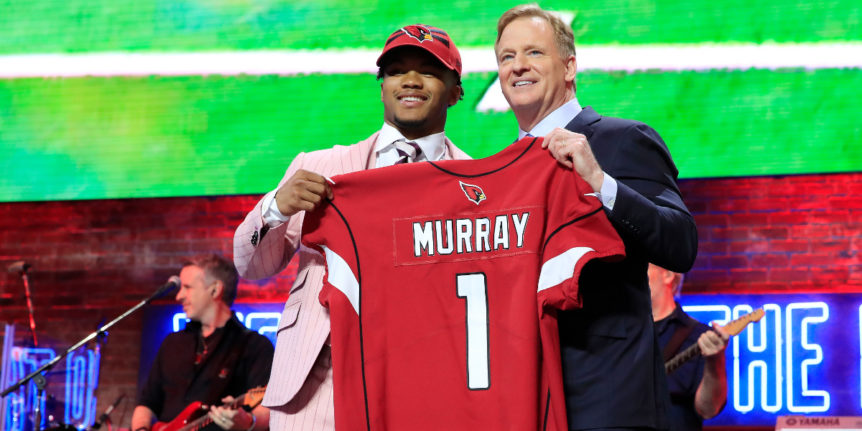
The Heights of Number One
Twelve months ago, Gridiron was on the phone with Oklahoma head coach Lincoln Riley discussing Baker Mayfield’s prospects ahead of the 2018 NFL Draft. We spoke for almost half an hour before signing off. Then, just as we were set to hang up, Gridiron asked him what he was planning to do for an encore given that he’d lost a Heisman winner who’d taken the Sooners to the brink of their first National Championship since 2000.
“Oh, I think we’ll be OK,” he said with a chuckle. “I think Kyler Murray’s going to be just fine.”
Back then it was an afterthought, a throwaway comment that only really resonated six months afterwards. On that day, Oklahoma would march into Jack Trice Stadium in Ames in the third week of September and take down Iowa State on the back of an almost-flawless passing performance by the kid Riley had laughed about. As the game unfolded, the mental checklist of pro evaluation kicked in:
‘Arm strength?’ Tick
‘Accuracy?’ Tick
‘Pocket presence?’ Tick
‘Pocket passer or dual threat’? 89 percent of his passes – or 336 of his 377 – came from the pocket. Tick.
‘Mobility?’ Tick
‘Commitment…’
At that point, Murray was a future baseball superstar. He and Scott Boras, the most powerful of agents, told anyone who asked that he planned to finish his sole season as the Sooners’ starting quarterback and report to spring training with the Oakland Athletics, who picked him ninth overall in the Major League Baseball draft and agreed to pay a $4.66million signing bonus. Sure, watching him was fun, but in NFL terms? Ultimately fruitless.
Oh, and then there was the other elephant in the room.
‘Size…’ As good as he was, Murray was tiny, both in height terms and physical size. Yet opponents couldn’t get close to tackling him. And yet…
Fast forward to late February and possibly the most important weigh-in in the history of the NFL Scouting Combine. An acceptable 207lbs on the scales, 23lbs lighter than Patrick Mahomes, 18 less than Aaron Rodgers and Tom Brady, although many around Norman confirmed that his playing weight last season was in the 190s. But, still, a player can add weight. You can’t add height. Estimates had him anywhere between 5ft 8ins and 5ft 11ins, with the former almost certainly ruining his chances of the first round, the latter potentially pushing towards the first overall pick, such are the fine lines.
The portion of Lucas Oil Stadium where measurements takes place went quiet when he stepped to the tape. It was standing room only as journalists and scouts with fingers poised on cell phones to let the social media world or, more importantly, the waiting GMs upstairs know the crucial result. “This is the most buzz around a prospect in history,” said the former Dallas Cowboys personnel boss Gil Brandt, “and I’ve been doing this since 1977.”
When the announcement came in – 5ft 10ins and one-eighth – it was greeted with relief by many: he wasn’t tall, but he probably tall enough. When Russell Wilson, the smallest starter in the NFL, was measured at the combine in 2012, he was 5ft 10ins and five-eighths. “What’s four-eighths?’,” many asked rhetorically.
How did we get here? How is it possible that a league that so values height at the quarterback position – more than any other – is ready to make a 5ft 10in (and one-eighth), 195-pound baseball star potentially No. 1 overall in the football draft? To really find out, we probably have to go back to the early 1980s and Kyler’s father, Kevin. The Dallas-Fort Worth Metroplex Player of the Year as a senior in high school, he was recruited by Texas A&M where he led the SWC in touchdowns as a freshman. An undersized dual-threat quarterback, he outplayed Bo Jackson in the Cotton Bowl as a sophomore, then brought the Aggies back from 17-0 down against Baylor as a junior to win 31-30 in a game that Texas Magazine voted as the best of the 1980s. But a serious ankle injury limited any professional ambitions he held.
Instead, he turned his attentions instead to his young son Kyler.
In the second grade, father and son would take a group of friends to a local field to work out, Kyler lining up at quarterback with two receivers and four defensive backs. At the snap of the ball, father told son whether to throw a slant, a post, a comeback or an out, learning the nuances of the spread offense one day at a time. “Kyler really began to understand route concepts at the age of 10,” Kevin Murray told Bleacher Report. “I put him in the shotgun because I knew that was the type of offense he’d be best suited to play in college. And I always required him to read the defense and process the information. If door No. 1 wasn’t open, he needed to find door No. 2. At a young age, he showed an ability to dissect what was in front of him.”
By sixth grade the pair were watching film of NFL quarterbacks for hours, with Kevin testing Kyler on each play and whether the signal caller in question had made the right decision. By the time he left high school that study had paid off big time: Murray was named the National Gatorade Player of the Year and the Gatorade Texas Player of the Year as a junior and a senior, the 2014 Offensive Player of the Year by USA TODAY, 2013 first-team All-USA by USA Today and he led Allen High School to back-to-back-to-back state titles in 2012, 2013 and 2014. Oh, and he never lost a game. “What a special player,” his former head coach Tom Westerberg tells Gridiron. “What a special kid. I hope everyone enjoyed his career here, I know we did.”
In the early days at Allen, Murray was restricted by the run-first nature of the offense, something Westerberg felt he needed to do to maximise the talent around his young passer, rather than any intention to hold him back. “His sophomore year, we were more geared towards pounding the football,” Westerberg said. “We were probably about 70 percent run, 30 percent pass. Then, the next year, we were probably about 50-50. And then, the next year, we were probably about 60-65 percent throwing and 35-40 percent running. Kyler was too good do anything else.”
His talents got Murray recognised around the country as it came time to head to college. Texas wanted to keep him in state, while Oregon pushed hard. Lincoln Riley – then the offensive co-ordinator at Oklahoma – came close but, when it became clear that Murray was following his father to A&M, the pair left on good terms. “We ended up going down to Allen to meet with him, had a really good meeting, hit it off,” adds Riley. “But, right before signing day, it was a little too much, too fast. Little too much ground to make up. So, he went ahead and signed with A&M. But it was important to leave an impression because you just never know.”
Whether it was foresight or not, Riley was right. In the post-Johnny Manziel era at College Station, things started to fall apart for coach Kevin Sumlin and his staff. Having seen 2014 starter Kenny Hill leave, Murray – along with Kyle Allen and Jake Hubenak – fought for the starting position in Murray’s freshman season. In the end, Sumlin fudged it: Allen played in 10 games and Murray eight, but both were annoyed at the lack of communication with the coaching staff and the pair followed in Hill’s footsteps and quit within the space of a week. “To all my family, friends and fans out there, I thank you for your love and continued support,” Kyler Murray said on Twitter. “I will forever be grateful for the opportunities I’ve been given and relationships I’ve made at Texas A&M. I wish nothing but the best to all my guys in that locker room.”
For the Murray family the question of ‘where next’ raged. But one man they’d been impressed with throughout the original recruitment process stood out. Enter Riley. “One of his former coaches in high school called me to let me know he was going to leave, and they asked me if we would be interested,” Riley says. “I told him we would be. Talked to Kyler pretty quickly after that, and his family. Got through the things we needed to get through. It happened in a matter of days.”
Murray was equally thrilled to be heading to Norman to re-start his career. “It was a no-brainer for me with Coach [Bob] Stoops, Coach Lincoln [Riley],” he said. “Just the trust I had in them, the stability. Coach Linc is one of, if not the best offensive coordinators in the country. Then you look at the guys around you that you’re playing with. We have all the talent in the world here. Add that with Coach Schmitty [strength coach Jerry Schmidt] in the weight room and it doesn’t get much better. Playing in a city like Norman, where it’s all about Oklahoma football, [was] a no-brainer for me.”
But issues over his height remained. Sooner message boards struggled to believe that they could be National Championship contenders with a 5ft 10in (and one-eighth) passer at the helm which led to an editorial in USA Today that fired the fans up even more: “The truth is, Murray didn’t look the part of an elite-level college player in his short time at Texas A&M. He is small for a modern-day quarterback, and his lack of accuracy was jarring, even for a freshman. Maybe he would have developed into something, but the idea he was going to be the next Johnny Manziel seemed far-fetched. The safe bet is Murray will go full-time into baseball and never play college football again.”
Two years on the bench and one Baker Mayfield Heisman later and it was time to see if the fans – and that editorial – were right.
Murray eased his way into the 2018 season – his single college football lap before heading to spring training with the A’s – with a 63-14 win over FAU, going 9-of-11 in the first half. Then he ripped five touchdowns a week later against UCLA as the nation began to take notice. “You think there would be a big drop off when you go from a Heisman Trophy winner, but that kid’s very special,” said Bruins coach Chip Kelly after the game.
By the time Oklahoma got to Texas at the Cotton Bowl they were 5-0 and ranked seventh in the country. Down 45-24 with 8:34 remaining in the game, Murray had his Heisman moment(s). First, he hit his old high-school teammate Lee Morris for a touchdown then, after the defense got the ball back, he sprinted 67 yards up the Texas sideline to bring the game to within seven with 5:11 remaining. As if that wasn’t enough, he drove Oklahoma down the field to tie the game with two minutes left on a Trey Surmon pitch. Although they’d go on to lose on a last-second field goal, Murray was now right in the Heisman race. And never once was his height an issue as he ripped defenses apart across America. As for professional football? The plan was still baseball. Until it wasn’t.
Murray didn’t truly know what NFL teams thought of him until he completed his award-winning 2018 season, he told hundreds of journalists as they gathered in a corner of the mammoth Indianapolis Convention Centre ahead of the combine. Was he tall enough? Big enough? Could he read a complicated pro defense? Was he committed enough? “Football has been my love and passion my entire life,” he said. “I was raised to play QB, and I very much look forward to being the best one possible and winning NFL championships. My dad gave me a big headstart by coaching me and teaching me. And now I really feel like I can’t be stopped. I don’t want to sound cocky, but that’s just how I honestly feel. I’m confident. If a play breaks down, I know I can make something happen.”
As for his former head coaches Westerburg and Riley, his ability to make it as a pro has never been in doubt. “He’s always been a kid that’s been driven to try to be the best,” said Westerberg, now the head coach of Barbers Hill High School, east of Houston. “I’m just glad he’s getting to do what he wants to do. I sent him a text the other day, ‘Looks like you’re having fun; that’s what it’s all about.’ That’s the main thing, I’m just glad that he’s happy.” And Riley agrees. “He’s a fun guy to coach. Never had anyone quite like him. Mainly because there’s not many that’s been like him.”
So where will he end up in April’s draft? It seems likely that Arizona at one will be the landing spot, giving Riley back-to-back Heisman-winning first overall picks. “I will be shocked,” he adds, “if three players get their name called before he does.”
Tall story? Only time will tell.
This article originally appeared in Issue XLVI of Gridiron magazine – for individual editions or subscriptions, click HERE
